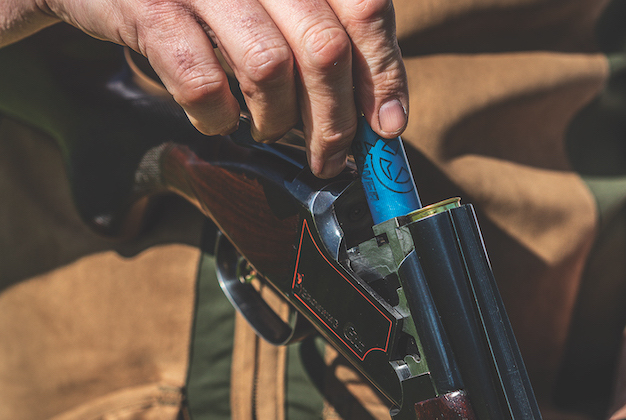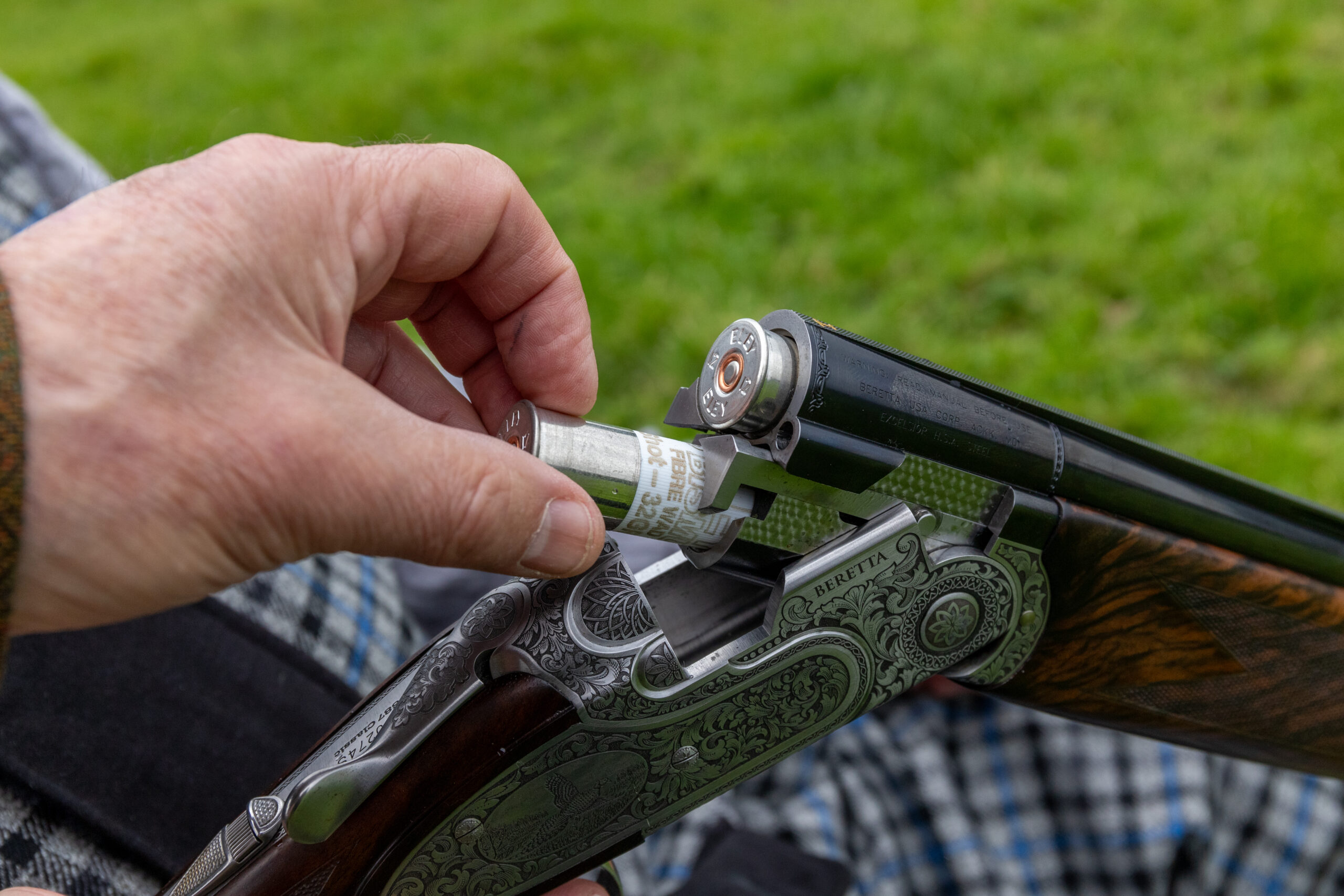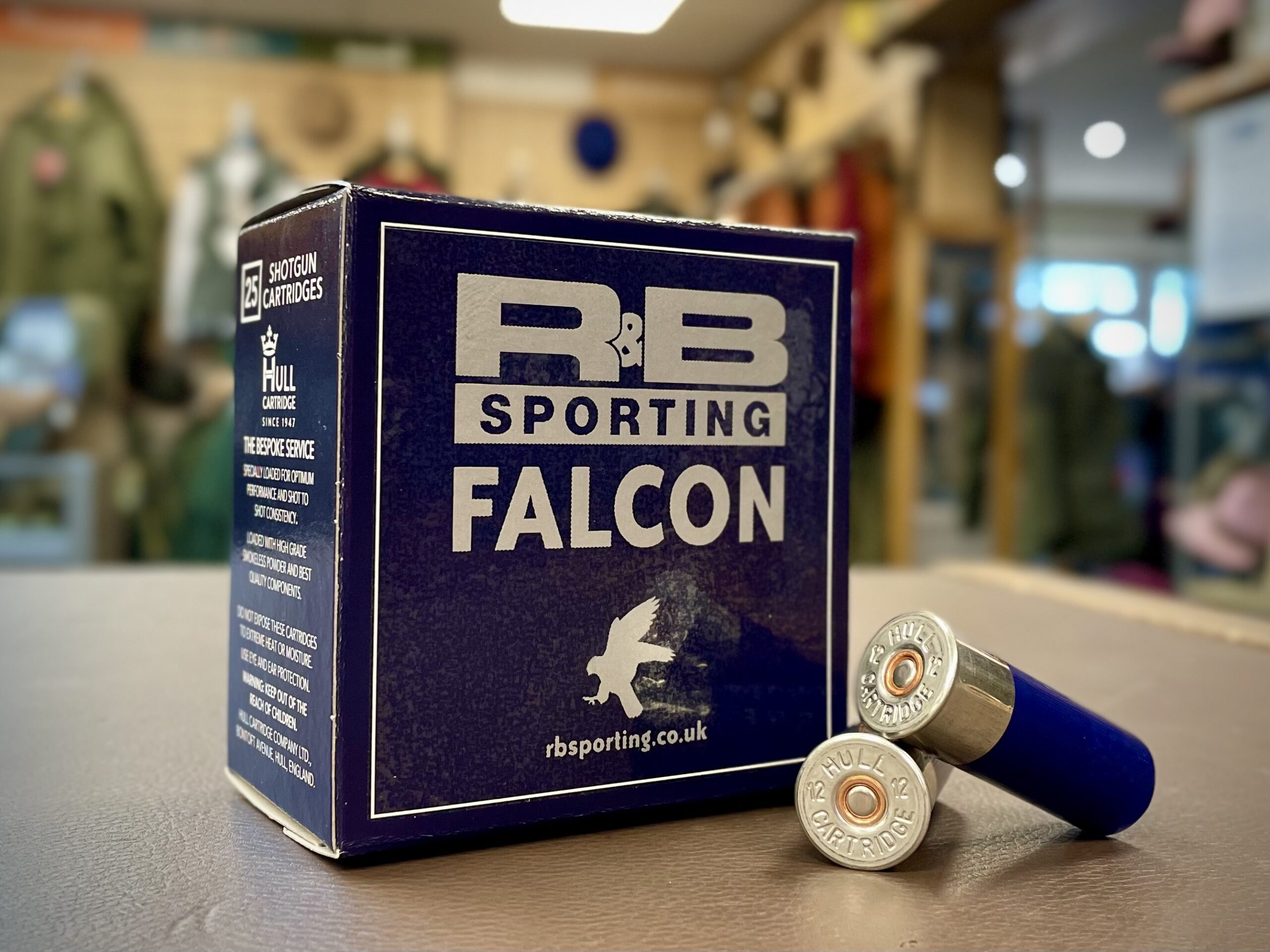Shotgun wads explained – here’s what you need to know
Richard Atkins looks at the wad, a small but vital cartridge component

Besides checking our shotgun cartridges are loaded with the correct shotgun wads type to comply with the rules of the ground we are shooting on, it’s likely we don’t give much thought to that small item between powder charge and shot load. Prior to the introduction of plastic, all wads were made from ‘traditional’ materials such as felt, fibre and cork and these are increasingly required again today, with grounds insisting on their use for environmental reasons.
The one-piece plastic cup wad remains the top choice for major competition use but moves against plastics have increased such that, in the UK at least, cartridge sales have swung back in favour of fibre wad cartridges. The same also applies in the game shooting spheres, as farmers and landowners move away from plastic wad litter on their ground.
When plastic wads were first introduced, shooters were regaled with their many advantages; some promotional material made claims for what would now appear to be rather optimistic performance improvements against traditional wads.
Such claims may, in part, explain why some shooters feel disadvantaged when required to use fibre wad cartridges. Need they feel concerned, and, if so, how much difference does it make?

Cork fibre cork sandwich wad
Functions of shotgun wads
All main driving wads, of any type, must fulfil certain key functions with the prime one being to provide an effective seal between the rapidly expanding gases produced by the propellant powder upon ignition and the shot charge.
This gas seal, known as obturation, provides the thrust that transfers the gas energy to accelerate the shot charge to velocity to perform the task required.

Effective obturation is important for two important reasons: making efficient use of the gas energy, and preventing hot gases getting past the wad, where it can cause issues. Key potential issues are disruption of the pellets resulting in irregular patterns and, more seriously, shot balling.
Traditional wads are basically a tightly fitting ‘bung’, which seals the bore and separates the powder charge from the shot load. They are fundamentally the same as the wadding used since early musket and muzzle loading times, where a simple punch was used to cut wads from a variety of available materials.

Eley Kleena fibre wads (early type)
Experience showed that felt materials were particularly useful for making wads, being strong enough to stay intact while sufficiently flexible to expand and form a seal. The best performing among all felt materials so far discovered is that made from wool and white wool wads retain the reputation for being the best traditional cartridge wad material. Only the advent of plastic wads has reliably surpassed the performance of wool felt.

Fibre wads
To date, the most successful and cost effective material to replace white wool felt is vegetable fibre, as initially used as an industrial insulation material. Fibre wads were cut from fibre boards on special machines capable of producing many wads simultaneously. Actual fibres used vary, some being by-products, such as wood pulp and sugar canes, otherwise waste material from other industries. One successful example of vegetable fibre wads are the Eley Kleena wads introduced in 1959. These were made available to home loaders back in the day (I still have some early examples). Current Kleena wads (now called Kleena Evo 5) use a paper-based material and are lighter in colour than the originals. The name Kleena derives from their claimed ability for reducing bore fouling. Kleena wads are lubricated with a soft wax in a ‘ring-waxing’ process and are usually used in pairs, with two shorter wads being used to make the required wad column length, in conjunction with an over-powder sturdy card disc called a ‘nitro’ card. The nitro card aids gas sealing and, importantly, prevents lubrication from the fibre wad from leaching into the powder and causing a misfire. All conventional fibre wad cartridges use either an over powder card or plastic obturator disc under the wad.
A high percentage of the world’s major cartridge manufacturers currently use fibre wads from Diana, the Italian maker, which produces a huge range in different calibres and lengths. These are readily identified by being long enough to use a single wad instead of two (which simplifies the loading process and may be cheaper) and by their dark colour plus a thin plastic film at each end. This film helps prevent small shot pellets from becoming embedded into the surface of the wad under acceleration set back forces.

Fibre wad manufacture is fairly straightforward but to make consistent, high quality fibre wads is demanding. Particularly important is maintaining precise wad diameter to avoid ovality and also the tendency to cut them tapered.
The taper comes from the need to press on the material from which the wads are cut during the cutting process where, typically, rotating cutter tubes are pressed through the wad board. As some degree of expansion is necessary for the wad to fulfil its gas sealing function the cutting pressure can cause the material to expand as the wads are cut.
This can result in the wads produced being slightly smaller in diameter at one end than the other. Inconsistencies in the fibre board material used can affect final precision and therefore performance and increased speed of production can exacerbate such problems. Therefore, considerable quality control must be applied from the quality and consistency of the material used right through the production process to ensure the fibre wads are as uniform in size, firmness and weight as possible.

ROB Viper fibre wad with plastic obdurator
Any failing in consistency within the fibre wads will, inevitably, be reflected in the performance of cartridges loaded with them. Fibre does not have the expansion capabilities of true felt wads and therefore is less able to compensate for any inconsistency. This will show up in the ballistic results where greater variation in velocity can arise.
Obturator discs
There is a relatively simple answer to obtaining greater efficiency from fibre wad cartridges: the obturator disc used in place of the nitro over powder card. This is a plastic disc, formed with symmetrical gas sealing lips, and means it can be loaded either way up for ease of loading.
Several companies have offered fibre wad cartridges with an obturator disc for several years. They have never quite taken off in the UK, probably because it still meant leaving a small piece of plastic behind. With the recent advent of the biodegradable/water soluble and other environmentally friendly plastic materials the opportunity is now there to produce obturator discs from such ‘eco’ plastic materials. Indeed, Gamebore are at this time launching just such an obturator in their Quad Seal cartridges.

Plastic obturator discs (left) and over powder cards
A level playing field?
To answer the pivotal question of whether fibre wad cartridges pose a performance difference the fair answer is: it depends. With some major clay grounds banning plastic wad use a common response has been: “So long as everyone is using fibre wad cartridges it is the same for everyone.” But is this so?
Cartridges depend on more things than the wad to achieve their overall performance. When all aspects are equal ( particularly shot quality and mean velocity) the difference between a plastic wad and similar quality fibre wad cartridges is not great. With budget loads and soft shot the plastic wad, due to preventing contact with the bore and improved gas seal, will usually give slightly more dense patterns, possibly around 3% to 5% (but seldom the 10% once referred to).
With premium cartridges the consistency in velocities and patterns achieved has often shown that the best quality fibre wad cartridges can closely match that of plastic wad loads. This has become more the case in recent times and is certainly the case that no shooter would be able to detect the difference from one shot to another.
There is, however, a caveat: the gun used can make a significant difference.

The very latest fibre wad development is that recently launched by French company Jocker. This is a full cup wad with a shot cup preventing the shot touching the barrel bore, a fibre wad under the shot to provide cushioning and a gas seal skirt formed from card at the base. It effectively replicates a plastic cup wad but made from all fibre materials. I have tried these and they worked very well. I anticipate seeing a lot more of them now the shooting grounds have opened up again.
Only felt and ‘traditional’ wads were available when shotgun makers vied for superiority in performance with field trials. Crucially, bore sizes then were ‘tight’ by modern standards and chamber lengths matched the cartridges intended for use in them. Typically, forcing cones were short. Because traditional wads rely upon forming a ‘plug’ to obturate well, all of these factors particularly affect performance with fibre wad cartridges. CIP bore sizes for 12-bore guns run from 18.2mm to 18.9mm diameter. Older guns tended to be at the tighter end with 18.3mm (0.716in) to 18.5mm (0.728in) being typical. This fits well with the 0.729in nominal bore diameter.
With fibre wads not expanding as well as felt (or plastic) wads, it is inevitable that as bore sizes increase the amount to which fibre wads are compressed in the bore to provide good obturation is reduced. This is a topic in itself, so suffice to say here that, as recent moves to larger bore diameters – often accompanied by longer forcing cones which further increase bore diameter (at the point where gas pressure is highest) – fibre wads can be faced with a more difficult task than they ever had previously. Tests have shown that some competition shotguns that produce excellent results with quality plastic wad cartridges can perform markedly less well with fibre wads.
I cite but one recent example experienced during my own pattern testing. A popular competition cartridge from a well known maker was tested in a new gun with oversize bore and lengthened forcing cones. The fibre and plastic wad types tested gave the following percentage pellets within the 30in circle, at 40 yards, from the factory Imp Mod choke tube: Fibre wad = 218 pellets and Plastic wad 290 pellets.
That is around 25% fewer pellets in the usable pattern and a significant result. The same gun recorded a closer result using a different brand. This example indicates there is much more to achieving a ‘level playing field’ than might be supposed. The only way to be sure is to conduct meaningful pattern tests with your gun, chokes and cartridges.
Why do fibre wad cartridges cost more?
Yes, fibre wad cartridges do cost more than their plastic wad equivalent. The first reason is, naturally, that the wads themselves cost more. Not only is there the main driving wad (or wads) but an over powder nitro card and sometimes an under shot card too. This adds a marginal cost difference but other costs also arise: powder charge; production rate and quality control.
Fibre wads are less efficient and not all the propellant powder energy is transferred efficiently to the shot charge. To compensate, powder charge weights are increased – around 5% – to match the plastic equivalent.
With more components to insert, the loading process is complex, and, with one being a thin card with a tendency to tilt, great care has to be taken to minimise loading errors that interrupt production. Quality control has to ensure no less than perfect cartridges reach the customer. Some makers use harder lead shot in their higher grade fibre wad cartridges, which helps ensure the patterns perform with their plastic wad equivalent. The result of increased costs and slower production rates account for the extra cost for the fibre wad version of your favourite cartridges.
I hope this encourages shooters to look closely into the cartridges they buy and test the patterns their equipment actually produces. It can be quite enlightening.








